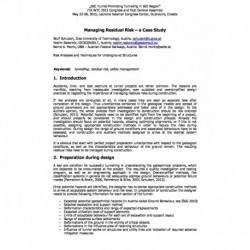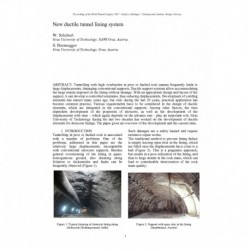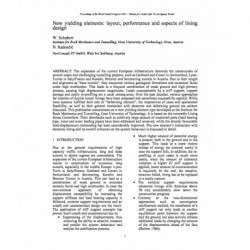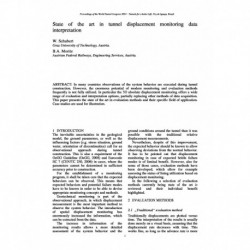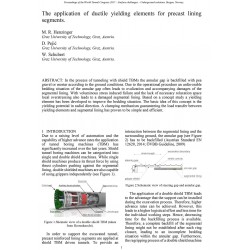No document
Search & filter
Search for a publication
Search & filter
List of products by author: W. Schubert
-
Managing Residual Risk – a Case Study
Abstract: Accidents, time- and cost overruns at tunnel projects are rather common. The reasons are manifold, reaching from inadequate investigation, over outdated and oversimplified design practices to neglecting the importance of managing residual risks during construction. If risk analyses are conducted at all, in many cases they are seen as separate task after completion of the design. Thus...
0,00 € -
New ductile tunnel lining system
Abstract: Tunnelling with high overburden in poor or faulted rock masses frequently leads to large displacements, damaging conventional supports. Ductile support systems allow accommodating the large strains imposed on the lining without damage. With an appropriate design and layout of the support, it can develop a controlled resistance, thus reducing displacements. Development of yielding...
0,00 € -
New yielding elements: layout, performance and aspects of lining design
Abstract: The expansion of the current European infrastructure demands the construction of several major and challenging tunnelling projects, such as Gotthard and Ceneri in Switzerland, LyonTurino in Italy/France and Koralm, Brenner and Semmering tunnels in Austria. Due to their length and alignment as “base tunnels”, they encounter various geological formations and tectonical faults under high...
0,00 € -
State of the art in tunnel displacement monitoring data interpretation
Abstract: In many countries observations of the system behavior are executed during tunnel construction. However, the enormous potential of modern monitoring and evaluation methods frequently is not fully utilized. In particular the 3D absolute displacement monitoring offers a wide range of evaluation and interpretation options, partially replacing other methods of data acquisition. This paper presents...
0,00 € -
The application of ductile yielding elements for precast lining segments
Abstract: In the process of tunneling with shield TBMs the annular gap is backfilled with pea gravel or mortar according to the ground conditions. Due to the operational procedure an unfavorable bedding situation of the annular gap often leads to ovalization and accompanying damages of the segmental lining. With voluminous stress induced failure and the lack of necessary relaxation space local...
0,00 €

